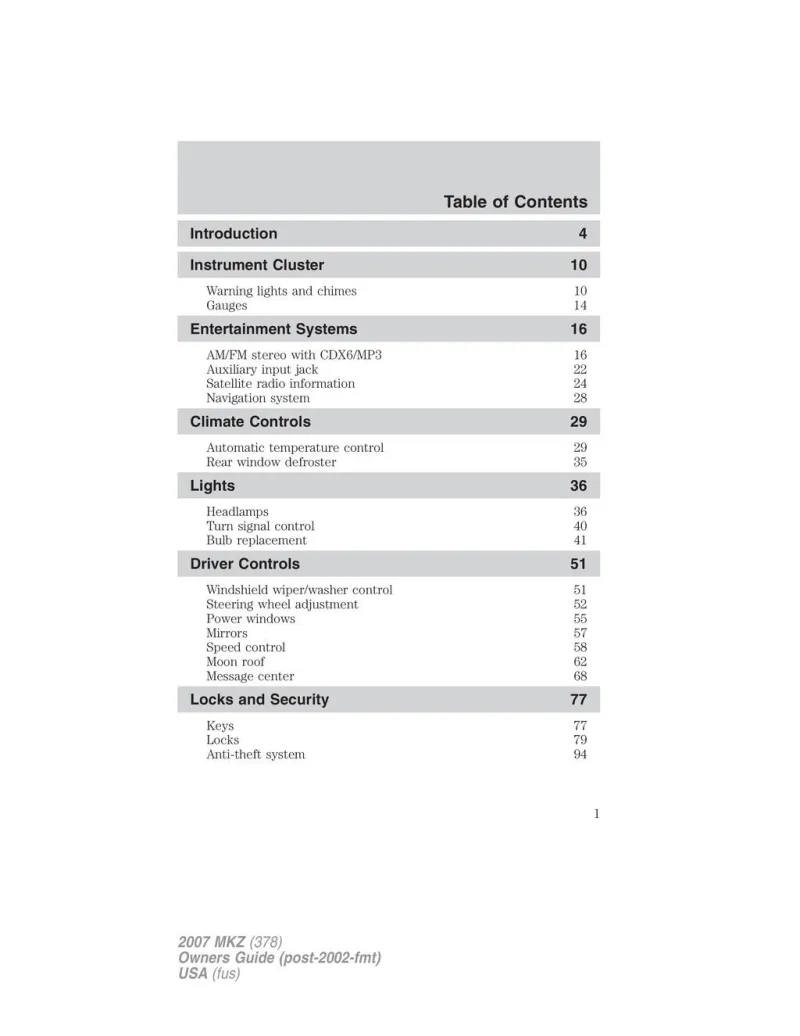2007 Lincoln Mkz Owner's Manual

Table of Contents
2007 Lincoln Mkz Overview
Introduction
The 2007 Lincoln MKZ is a luxurious midsize sedan that embodies a unique blend of style, performance, and advanced technology. This elegant vehicle redefines the driving experience with its sophisticated design, plush interior, and multitude of features aimed at providing a comfortable ride. As a flagship model in Lincoln's lineup, the MKZ stands out with its refined aesthetics and impressive engineering, making it a popular choice among discerning drivers who prioritize both luxury and performance.
Powertrains
The 2007 MKZ is equipped with a potent 3.5-liter V6 engine that generates an impressive 245 horsepower and 251 lb-ft of torque. This engine comes standard with a six-speed automatic transmission, providing seamless shifts that enhance the overall driving experience. For optimal performance, the MKZ allows for both front-wheel drive and an all-wheel-drive option, ensuring that drivers can navigate varying road conditions with confidence while still enjoying an exhilarating performance on the road.
Trims
Features
Inside the MKZ, an array of impressive features awaits. Standard offerings include heated front seats, dual-zone climate control, and a state-of-the-art sound system. The advanced navigation system, available on select trims, provides effortless guidance, while a multitude of safety features—including anti-lock brakes, traction control, and multiple airbags—ensures every drive is both comfortable and secure.
Owners Manual
The owner's manual for the 2007 Lincoln MKZ is an invaluable resource for new owners, providing comprehensive guidance on vehicle operation, maintenance schedules, and troubleshooting. It includes detailed instructions for the use of all onboard technologies and systems, ensuring that owners can maximize the performance and longevity of their luxurious sedan.
User manual download
The Lincoln Mkz owner manual for the 2007 model year is to be found in PDF downloadable format on this page. The owner manual for the model year 2007 is free and in English, but the repair manuals are usually not easy to get and may cost more.
Manual Questions
Fill the form below and someone will help you!

